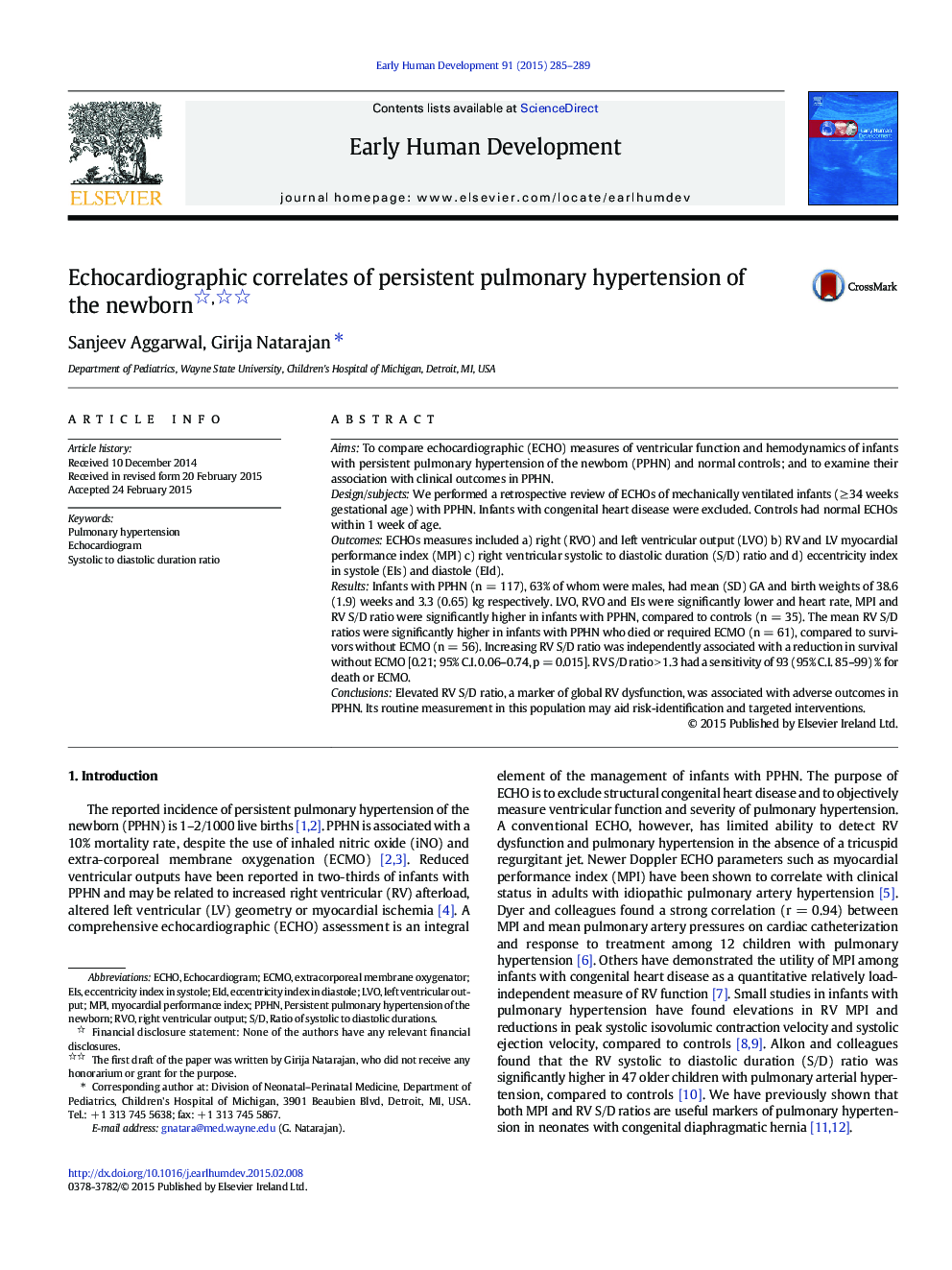| کد مقاله | کد نشریه | سال انتشار | مقاله انگلیسی | نسخه تمام متن |
|---|---|---|---|---|
| 3916885 | 1252079 | 2015 | 5 صفحه PDF | دانلود رایگان |
• Right ventricular S/D ratio was feasible in 83% of neonates with persistent pulmonary hypertension.
• Right ventricular S/D ratio was significantly higher in infants with PPHN with adverse outcomes.
• Right ventricular S/D ratio > 1.3 had 93% sensitivity and 81% positive predictive value for death/ECMO.
AimsTo compare echocardiographic (ECHO) measures of ventricular function and hemodynamics of infants with persistent pulmonary hypertension of the newborn (PPHN) and normal controls; and to examine their association with clinical outcomes in PPHN.Design/subjectsWe performed a retrospective review of ECHOs of mechanically ventilated infants (≥ 34 weeks gestational age) with PPHN. Infants with congenital heart disease were excluded. Controls had normal ECHOs within 1 week of age.OutcomesECHOs measures included a) right (RVO) and left ventricular output (LVO) b) RV and LV myocardial performance index (MPI) c) right ventricular systolic to diastolic duration (S/D) ratio and d) eccentricity index in systole (EIs) and diastole (EId).ResultsInfants with PPHN (n = 117), 63% of whom were males, had mean (SD) GA and birth weights of 38.6 (1.9) weeks and 3.3 (0.65) kg respectively. LVO, RVO and EIs were significantly lower and heart rate, MPI and RV S/D ratio were significantly higher in infants with PPHN, compared to controls (n = 35). The mean RV S/D ratios were significantly higher in infants with PPHN who died or required ECMO (n = 61), compared to survivors without ECMO (n = 56). Increasing RV S/D ratio was independently associated with a reduction in survival without ECMO [0.21; 95% C.I. 0.06–0.74, p = 0.015]. RV S/D ratio > 1.3 had a sensitivity of 93 (95% C.I. 85–99) % for death or ECMO.ConclusionsElevated RV S/D ratio, a marker of global RV dysfunction, was associated with adverse outcomes in PPHN. Its routine measurement in this population may aid risk-identification and targeted interventions.
Journal: Early Human Development - Volume 91, Issue 4, April 2015, Pages 285–289
